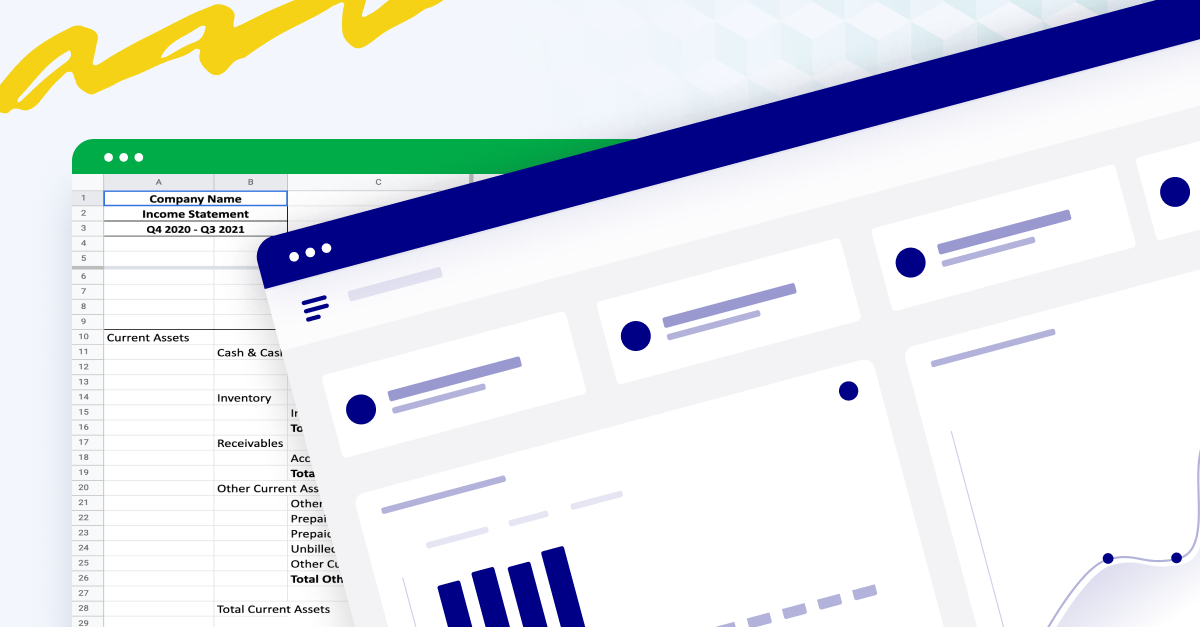HR and Finance: Where do they intersect?
To build a great partnership between HR and Finance, it's essential to understand what each department brings to the table. While they have different focuses, their roles are deeply interconnected.
HR (Human Resources) is certainly focused on hiring people, but this department's main priority is building a great place to work. Here's what HR focuses on to accomplish this:
- Talent acquisition and retention: HR finds the best people for the job and makes sure they want to stick around. This covers everything from recruitment to onboarding and career development.
- Employee development and performance management: HR sets up training programs, handles performance reviews, and ensures everyone has what they need to grow and succeed.
- Organizational culture and change management: HR shapes the company culture and manages changes to keep everyone aligned with the company’s mission and values.
Finance, on the other hand, focuses on keeping the company financially healthy and stable. Here's their playbook:
- Financial planning, analysis, and forecasting: Finance handles budgeting, financial projections, and strategic planning to ensure the company's long-term success.
- Budgeting and resource allocation: Finance makes sure all departments have the funds they need while keeping an eye on overall fiscal responsibility.
- Risk management and compliance: Finance identifies financial risks, ensures compliance with laws, and protects the company’s assets.
While HR and Finance might seem like they operate in different worlds, they actually need each other to succeed. Here are some key areas where they intersect:
- Workforce planning and financial forecasting: HR knows what talent is needed, and Finance figures out how to budget for it. Together, they create a realistic workforce plan.
- Compensation and benefits budgeting: HR designs competitive pay and benefits packages, and Finance ensures these plans are sustainable.
- Training and development investment analysis: HR identifies training needs, and Finance evaluates the return on investment for these programs.
Understanding these roles and their intersection points is the first step towards building a strong HR-Finance partnership. Next, we'll dive into the specific benefits of this collaboration and how it can drive your organization forward.

The benefits of a strong HR-Finance relationship
When HR and finance join forces, the whole organization stands to gain from their alliance. Here’s how a strong partnership between these two departments can drive success:
Improved financial and workforce planning
By working together, HR and finance can create more accurate and effective workforce plans. HR knows the talent needs and trends, while finance provides the budget to support these needs. This collaboration ensures that the company has the right people in the right places, all while staying within budget.
Enhanced alignment of business and people strategies
HR and finance aligning their strategies means the company's business goals are supported by its people strategy. When HR initiatives are backed by financial plans, and vice versa, the organization can move forward with a unified approach. This alignment helps in setting realistic goals and achieving them efficiently.
Increased operational efficiency and cost-effectiveness
A strong HR-finance relationship can lead to streamlined processes and cost savings. For example, integrated data systems can reduce redundancies, and joint decision-making can prevent costly mistakes. Together, HR and finance can identify areas for improvement and implement changes that benefit the entire organization.
Strengthened ability to handle economic changes
In times of economic uncertainty, a solid HR-finance partnership is crucial. HR can quickly adapt workforce plans based on financial forecasts, while finance can make informed decisions about budget adjustments. This agility ensures that the company can respond to changes in the market swiftly and effectively.
Better decision-making through data integration
When HR and finance share data, they can provide comprehensive insights that lead to better decision-making. Combining HR data on employee performance and engagement with financial data on costs and revenues can highlight trends and inform strategies. This data-driven approach helps in making informed decisions that drive growth and efficiency.
By recognizing and leveraging these benefits, HR and finance leaders can create a powerful partnership that drives the organization toward success.
Key strategies for building a strong relationship
Building a strong relationship between HR and finance requires deliberate effort and strategic planning. Here are some key strategies to help you foster a collaborative and effective partnership:
1. Establishing clear communication
Effective communication is the backbone of any successful partnership. To ensure HR and Finance are always on the same page, be sure to establish:
- Regular joint meetings: Schedule regular meetings between HR and finance teams to discuss strategic plans, upcoming projects, and any challenges. This ensures both departments are on the same page and can align their efforts.
- Transparent communication channels: Create clear channels for communication, such as shared project management tools or dedicated Slack channels. This facilitates real-time updates and quick resolution of any issues that arise.
2. Fostering collaboration
Collaboration between HR and finance goes beyond occasional meetings. It's about working together on common goals and projects, feeding off of each other's strengths to produce better results than they would've been able to alone. Here’s how to make it happen:
- Cross-functional teams: Develop cross-functional teams for projects that require input from both HR and finance. This encourages collaboration and helps break down departmental silos.
- Shared performance metrics: Establish common performance metrics and KPIs that reflect the goals of both departments. This creates a sense of shared responsibility and mutual accountability. Some key metrics may include employee turnover rate, productivity, training ROI, or compensation and benefits costs.
- Joint initiatives: Organize company-wide initiatives, such as employee engagement programs or cost-saving projects, that require collaboration between HR and finance. This helps build a sense of teamwork and shared purpose.
3. Data integration and analytics
Integrating HR and finance data provides a comprehensive view of the organization, leading to better decisions. Here’s how to effectively integrate and use data:
- Combining data systems: Integrate HR and finance data systems to create a comprehensive view of the organization’s workforce and financial health. This facilitates better decision-making and more accurate forecasting. FP&A software like Cube integrates seamlessly with HR software, ensuring that data from both departments is easily accessible and up-to-date. This integration allows for real-time insights into workforce costs, productivity, and financial performance, enabling more informed strategic planning and resource allocation.
- Using predictive analytics: Leverage predictive analytics to identify trends and anticipate future needs. By combining HR data on employee performance and turnover with financial data, you can make proactive decisions that benefit the entire organization.
4. Defining shared goals and objectives
Aligning goals and objectives ensures that HR and finance are working towards the same end. Here’s how to set and maintain aligned goals:
- Aligning with business strategy: Ensure that HR and finance objectives are aligned with the overall business strategy. This helps both departments work towards common goals and supports the company’s long-term success.
- Setting common targets: Establish shared targets for workforce productivity, financial health, and other key areas. Regularly review and adjust these goals based on performance data to ensure continuous improvement.
- Collaborative goal setting: Involve both HR and finance in the goal-setting process. This ensures that both perspectives are considered and that the goals are realistic and achievable.
5. Building a collaborative culture
Creating a culture that values collaboration between HR and finance is essential for sustaining a strong partnership. Here are some ways to build this culture:
- Encouraging mutual respect: Promote a culture of mutual respect and understanding between HR and finance. This can be achieved through team-building activities, joint training sessions, and open forums for discussion.
- Promoting continuous improvement: Foster a culture of continuous improvement and innovation. Encourage both departments to share best practices, learn from each other, and implement new ideas.
- Recognizing collaborative achievements: Recognize and reward collaborative achievements. Celebrate successes and highlight examples of effective HR-finance collaboration to reinforce the importance of working together.
By implementing these strategies, HR and finance can build a strong, collaborative relationship that drives organizational success.

Common challenges (and how to overcome them)
Building a strong HR-finance partnership isn’t without its challenges. However, understanding these obstacles and knowing how to address them can pave the way for successful collaboration. Here are some common challenges and strategies to overcome them:
Cultural differences
HR and finance often have different mindsets and priorities, which can lead to misunderstandings and friction. Here’s how to bridge the cultural gap:
- Promote mutual understanding: Encourage HR and finance teams to learn about each other’s roles, challenges, and perspectives through joint training sessions and cross-departmental meetings.
- Build relationships: Organize team-building activities and social events that allow HR and finance teams to interact in a relaxed setting, fostering trust and camaraderie.
- Create a unified vision: Develop a shared vision and goals that both departments can rally around, reinforcing the idea that they are working towards the same end.
Data silos
Data silos occur when information is isolated within one department and not shared with others. Breaking down these silos is crucial for effective collaboration:
- Implement integrated systems: Use integrated HR-finance software solutions, like Cube, that allow seamless data sharing and real-time access to information from both departments.
- Standardize data practices: Establish common data standards and practices to ensure consistency and accuracy in the information shared between HR and finance.
- Foster a data-sharing culture: Encourage a culture of transparency and data sharing by recognizing and rewarding teams that effectively collaborate and share insights.
Resource constraints
Limited resources can make it challenging for HR and finance to work together effectively. Here’s how to manage and allocate resources wisely:
- Prioritize joint initiatives: Identify and prioritize projects that require collaboration between HR and finance, ensuring that these initiatives receive the necessary resources and support.
- Optimize resource allocation: Use data-driven insights to allocate resources efficiently, ensuring that both HR and finance have what they need to achieve their goals.
- Seek executive support: Gain buy-in from senior leadership to secure the necessary resources and support for HR-finance collaboration, emphasizing the strategic importance of this partnership.
By addressing these challenges head-on and implementing these strategies, HR and finance can overcome obstacles and build a strong, collaborative relationship that drives organizational success.
Conclusion: Better relationships, better results
A strong partnership between HR and finance isn't just a bonus—it's a necessity for driving organizational success. By understanding each other’s roles, establishing clear communication, and integrating data, HR and finance can work together seamlessly to improve planning, enhance alignment of strategies, increase efficiency, and drive better decision-making.
Ready to take your HR-finance collaboration to the next level? Request a demo today to see how Cube can integrate your HR and finance data seamlessly so you can build a stronger, more collaborative future for your organization.



.png)










